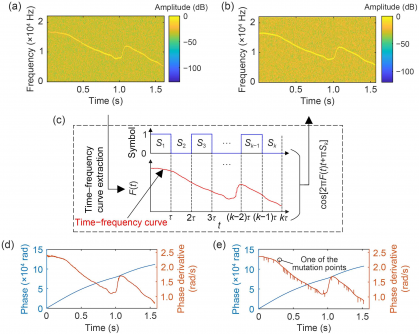UPDATE: Groundbreaking research out of Tianjin University has just announced a revolutionary method to recognize underwater communication signals that mimic dolphin whistles, a significant advancement in maritime military technology. This urgent breakthrough is vital as traditional recognition methods struggle to identify these signals, which can be crucial for covert military operations.
Underwater bionic camouflage covert communication (UBCCC) systems have become essential tools in military confrontations, yet conventional methods face serious challenges. Traditional signals, whether using low probability of interception (LPI) or low probability of detection (LPD), often get misclassified as natural underwater sounds due to their distinct artificial nature. The innovative method proposed by a team of researchers led by Qingwang YAO aims to change this dynamic.
The new technique, which utilizes a convolutional neural network (CNN), operates through three critical steps to ensure accurate recognition of these complex signals. First, the method employs **Spatial Diversity Combining (SDC)** to enhance the main signal while suppressing interference caused by multipath propagation in underwater channels. This foundational step is crucial for minimizing signal degradation.
Next, the team implemented a **Time-Frequency Spectrum (TFS) Mask Filtering** approach. This method effectively extracts whistle signals from noisy environments by treating the TFS as a two-dimensional image. The researchers applied advanced filtering techniques to identify and isolate time-frequency contours, leading to a significantly clearer signal extraction process.
The final step involves **Phase Derivative Spectrum and CNN Recognition**. Researchers utilized the Hilbert transform to derive the phase of the extracted whistle signals, feeding this data into a CNN for recognition. This innovative approach allows for detection even at low signal-to-noise ratios (SNR), achieving an impressive recognition accuracy of 90% under simulated conditions with an SNR of 0 dB.
Extensive validation occurred through both numerical simulations and field experiments. Data shows that recognition accuracy is notably higher in deeper waters compared to shallow ones, with a practical lake experiment conducted at Tianjin University’s Qingnian Lake achieving 81% accuracy at a distance of 150 meters. This is a remarkable feat considering the complexities of real underwater environments.
The paper detailing this urgent discovery, titled “Recognition Method for Underwater Communication Signals that Mimic Dolphin Whistles Using Phase-Shifting Modulation,” is co-authored by a team of researchers including Jiajia JIANG, Xiaolong YU, Zhuochen LI, Xiaozong HOU, Xiao FU, and Fajie DUAN. It highlights the pressing need for advanced recognition technologies in military and marine research contexts.
As this technology progresses, the implications for military strategy and underwater communication are profound. This recognition method not only enhances operational capabilities but also opens new avenues for research in marine biology and communication.
Stay tuned for further updates on this urgent development as researchers continue to refine their approach and explore its applications in real-world scenarios. For more information, access the full paper at https://doi.org/10.1631/FITEE.2400572. This advancement could redefine our understanding and utilization of underwater communication systems.







